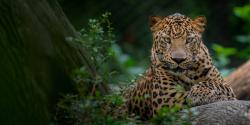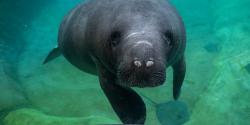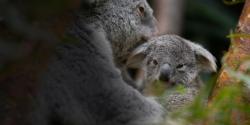Training is an essential part of animal care at the Columbus Zoo and Aquarium. Our expert staff works closely with the animals to train them on various behaviors to help provide them with the best care. During these bi-monthly segments, we will focus on training and how different animals around the Zoo demonstrate it.
Today’s Training Tales post is about natural behaviors. You might be asking, aren’t all behaviors natural? In some cases, yes, but in others there might be behaviors a species would exhibit in their native range that they are unable to exhibit in a zoo setting. Our Animal Care staff trains the animals to exhibit these behaviors for educational purposes or so that an animal can learn to begin doing these behaviors on their own throughout the day.
If you frequent the Zoo, you might have seen one of our Watering Hole demonstrations, which is a great time to witness many of these natural behaviors, including an aardvark foraging, a hornbill in flight, and watch the Cheetah Run. All of these behaviors are things that an animal would do in its native range, but not necessarily something they would have to do every day while living at the Zoo. In their native range, aardvarks spend a lot of time foraging for ants and termites, and to replicate this, the keepers trained the aardvarks to walk a route around the Watering Hole to search for treats. This might include standing on their back legs and using their tail as a kickstand while reaching inside tall termite mounds.
The Cheetah Run is also a trained natural behavior. In their native range, cheetahs will chase its prey, and at the Zoo, we replicate this behavior by having the cheetah chase a lure in a pattern. As our Animal Programs keepers begin training this behavior, they start by teaching the cheetahs to chase a fluffy lure ball from at an early age. The keepers say that the most vital part of training this behavior is that the cheetahs always “win” and catch the lure ball at the end. The cheetahs are also taught to trade the ball for their favorite treat (raw meat).
Another trained behavior you might see at the Zoo is the sea lions basking on the rocks in their habitat. While many people may think that sea lions are found on sandy beaches, a lot of their native habitat is rocky coastline. While resting on rocks may not seem like a unique behavior, when Adventure Cove first opened, many of the sea lions were uncomfortable with getting up on the rocks. The keepers were able to train the sea lions to venture up on the rocks, which aided in them becoming more comfortable with this part of their habitat. Now, the sea lions are often found resting on the rocks throughout the day.
In some cases, keepers will train an animal to do a natural behavior so that it can assist them in their daily care. For example, the koalas need to be walked from their indoor habitat to their outdoor habitat every day. While our keepers would normally have to carry the koala from one habitat to the other, they were able to train Thoar to walk down on his own. Thoar was trained to climb down one tree, walk through the koala building, enter his outdoor habitat, and repeat the process when he needed to go in for the night. Thoar has since passed away, but this training was so successful that the keepers plan on teaching this behavior to future koalas in our care.
Thanks for joining us for our natural behavior focused Training Tales post! The training at the Zoo doesn’t stop here–we have more incredible behaviors to share with you. Be sure to stop back again to see what else these amazing animals can do!









